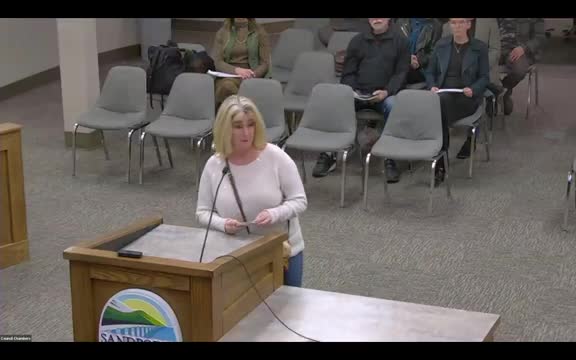
This article was created by AI using a video recording of the meeting. It summarizes the key points discussed, but for full details and context, please refer to the video of the full meeting. Link to Full Meeting
One resident passionately argued against the implementation of paid parking at City Beach, suggesting that while some parking fees could be increased in surrounding areas, the beach itself should remain free. They proposed a system where visitors could enjoy four hours of free parking, with penalties for overstaying, to ensure that everyone has the opportunity to enjoy this local treasure without financial barriers. This sentiment reflects a broader concern about accessibility to recreational spaces in Sandpoint, especially as other outdoor activities also come with fees.
In addition to discussions about City Beach, the meeting addressed parking issues related to a new resort at 56 Bridge Street. Jennifer Cox, a resident from Clark Fork, raised alarms about a recent waiver that reduced the required parking spaces from 244 to just 44. She highlighted the potential for overflow parking problems and criticized the commission's lack of clarity regarding the resort's plans to manage this issue. Cox pointed out that the city code allows for adjustments to parking requirements but questioned why the reduction was approved without a thorough analysis of the parking demand.
Cox also noted that the resort's payment of $400,000 for the parking waiver was significantly lower than what would have been required under city regulations, suggesting that the community might be shortchanged in terms of infrastructure support. Furthermore, she revealed that the resort plans to include 27 condos, which could further exacerbate parking challenges in the area.
The discussions from this meeting underscore the ongoing tension between development and community access to public spaces in Sandpoint. As the city continues to grow, the implications of these decisions will likely resonate throughout the community, prompting further dialogue on how to balance development needs with the preservation of public resources. The commission's next steps will be crucial in addressing these concerns and ensuring that the voices of residents are heard in future planning efforts.
Converted from City of Sandpoint | Planning & Zoning Commission Meeting | 02/04/2025 meeting on February 05, 2025
Link to Full Meeting
Comments
View full meeting
This article is based on a recent meeting—watch the full video and explore the complete transcript for deeper insights into the discussion.
View full meeting